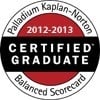As a senior executive who's implemented SAP from the ground up, you know that cross-border transactions between related companies have many implications. One often overlooked area is transfer pricing, which applies to those transactions. It is so overlooked that it's a primary area causing headaches for businesses from the Internal Revenue Service.
Transfer pricing involves setting prices for goods and services that move within the same company group. These are guided by rules to keep pricing fair within the company. But you may be wondering why this area deserves attention.
What Makes Transfer Pricing So Important?
My MBA program's Managerial Accounting courses highlighted a crucial equation. Profitability, measured by Return on Investment (ROI), is the product of Margin multiplied by Turnover.
This formula reveals how transfer pricing can impact a company's overall tax burden. That's because these decisions influence profitability and show the deep links within operations.
Transfer Pricing Audits On the Rise
Having established systems to measure management performance with SAP Strategic Enterprise Management, I've witnessed an increase in audit rates firsthand. Many companies find themselves facing scrutiny over intercompany transactions that appear incorrect to the IRS. It is vital that a Large Business carefully looks into their business tax structure to mitigate risk management.
Transfer pricing audits are increasing in frequency, scope, and cost worldwide. This is unsurprising as tax authorities intensify efforts to boost revenue and examine transactions more carefully, specifically on an international tax level.
A 2010 EY survey of multinational corporations highlighted this. At that time, 32% of respondents viewed transfer pricing as a significant tax obstacle. Additionally, it revealed the growing priority of managing tax risk.
Shifting Focus: From Compliance to Risk Management
By 2013, EY's survey indicated a shift. A majority, 66%, identified tax risk management as a major challenge, surpassing the figures from 2007. These numbers represent a substantial change, indicating increasing challenges as transfer pricing regulations continue to evolve.
Penalties have also increased. The 2010 survey revealed that 20% faced substantial penalties from audits, a notable rise from under 4% in 2005.
Arm's Length: The Guiding Principle
When different divisions of a company transact across borders, they should behave as independent entities. This approach adheres to the "arm's length" principle, establishing a pricing method aligned with expectations for controlled transactions.
The Organization for Economic Cooperation and Development (OECD) sets standards in these guidelines. The objective is to prevent profit shifting by multinational companies using various transfer pricing methods. Global tax authorities, collaborating with the arm's length principle, also strive to achieve this goal, looking for uncontrolled taxpayers as comparison.
Companies should charge what they would to external parties. The aim is to maintain fairness, ensuring that sales pricing methods among related companies remain competitive.
Real-World Example: Medtronic's Case
Sometimes, discrepancies arise between a company's and the IRS's interpretation of correctness. Consider the case of Medtronic, a medical device manufacturer. They engaged in a dispute with the IRS involving $1.4 billion with their Puerto Rican branch.
The issue was significant enough to be included in Medtronic's 2020 Annual Report on page 30. Such transparency provides rare insight into transfer pricing risks. Typically, the public remains unaware of these matters with most privacy policy terms.
Medtronic and the IRS also have been fighting over intangible assets in the tax court. This case, spanning back to tax court in 2016 was moved to the Eighth Circuit.
How Should a Company Approach Transfer Pricing?
Companies operating internationally must address the transfer pricing issue strategically. It influences how and where finances are reported and taxed. Without careful planning, it leads to the transfer pricing issue for corporate tax structures.
As an SAP Certified Business Consolidation Consultant, establishing financial integration between company units requires planning. However, this process becomes more challenging when tax regulations for related-party transactions lack clarity. Careful consideration of tax laws is needed.
Consider utilizing data analysis to determine the appropriate pricing between different parts of your company, especially across international borders. Decisions must be based on comparable product prices or necessitate the adoption of an alternative pricing method.
Setting Internal Pricing - A Balancing Act
One division might produce screens while another assembles the final smartphones. To avoid confusion later on, the arm’s length principle is applied. You establish fair prices that reflect the true value of products and services exchanged internally.
Suppose your screen-making division typically charges external companies $50 per screen. To adhere to the arm’s length approach, use that $50 figure internally for tax years in transfer pricing, rather than a lower price to benefit your assembly section. The cost method, price method, and other transfer pricing methods must be carefully balanced for things like intercompany transaction needs.
Why Arm's Length Matters
Maintaining realistic pricing achieves another objective. It prevents shifting company profits to evade national tax obligations. You must properly report this for tax reporting, on your tax return.
It also aids in avoiding excessive taxation. For example, setting significantly lower internal prices could make those screens appear nearly free on paper. Consequently, your assembly side reports huge profits solely due to purchasing components at reduced prices.
Coca-Cola's Transfer Pricing Dispute
Multinational companies operate across various countries. They sell products to different regions and manage finances across multiple global departments.
The Coca-Cola Company faced its own transfer pricing battle. It's consistently complex setting transfer prices in global companies, and conflicts can arise.
Table of Transfer Pricing Methods
Here are the key details that need managing when setting the method on a controlled transaction.
| Transfer Pricing Method | Description | When to Use |
|---|---|---|
| Comparable Uncontrolled Price (CUP) | Compares the price of goods/services in a controlled transaction to that of a comparable uncontrolled transaction. | When there are comparable uncontrolled transactions available. |
| Resale Price Method (RPM) | Calculates the arm's length price by starting with the resale price and deducting an appropriate gross margin. | When the reseller does not add substantial value to the goods. |
| Cost Plus Method (CPM) | Determines the arm's length price by adding an appropriate markup to the cost of producing goods/services. | When semi-finished goods are sold between related parties, or for long-term buy-and-supply arrangements. |
| Transactional Net Margin Method (TNMM) | Examines net profit relative to an appropriate base (e.g., costs, sales, assets) from a controlled transaction. | When there's a lack of reliable data on comparable uncontrolled transactions. |
| Profit Split Method (PSM) | Divides the combined operating profit or loss from a controlled transaction based on each party's contribution value. | When transactions are highly integrated, making it difficult to evaluate them separately. |
Document Everything. And Then Some
Multinational Companies (MNC's) must be well-prepared. They need to demonstrate arm’s-length transactions from a holding company that avoid taxes.
This may involve thorough documentation and analysis regarding the chosen pricing method. It may include detailed explanations, and any comparable benchmarks identified. Obtaining sound advice and staying informed are vital.
Proper transfer pricing facilitates equitable corporate tax distribution across various locations where MNCs operate. Adhering to this principle and implementing related corporate tax compliance measures safeguards responsible yet optimized earnings distribution across different tax jurisdictions. These actions also help prevent penalties.
FAQs about transfer pricing
What is meant by transfer pricing?
Transfer pricing concerns the handling of values for financial accounting purposes. Specifically for the transfer price and when a parent and child company interact.
What are examples transfer pricing?
Consider a scenario where a US parent company manufactures goods for resale. They then sends these items to an affiliated Asian entity responsible for sales processes with clients based in Europe.
What are the 5 methods of transfer pricing?
Several methods exist. Here are a few transfer pricing methods: CUP and the Resale method, while a third example is Cost plus, applicable when products are priced at the cost of production plus profit margin.
TNMM, or transaction margin, represents earnings relative to a specific base for transactions. PSM allocates operating value based on the contributions of involved parties.
What are the pros and cons of transfer pricing?
There's a lot to it. Pros include minimizing tariff costs by accurately assigning value through the cost method.
You streamline earnings and strategize for effective growth through transfer pricing. Drawbacks include risks associated with tax-related scrutiny of documentation, among other tax issues.
Conclusion
As you operate in international business, understanding concepts like transfer pricing is crucial for success. It requires strong accounting knowledge.
Consultants with their expertise can help here. Staying ahead in frequently changing areas like transfer pricing demands dedication, insight, and careful focus with things like your tax return and Form W-9 and potentially needing an installment agreement for federal tax.
We are a full-service Hubspot Certified Inbound Marketing and Sales Agency. In addition, we work to integrate your SAP System with Hubspot and Salesforce, where we have a deep delivery capability based on years of experience. Please our book a meeting service to get started.



